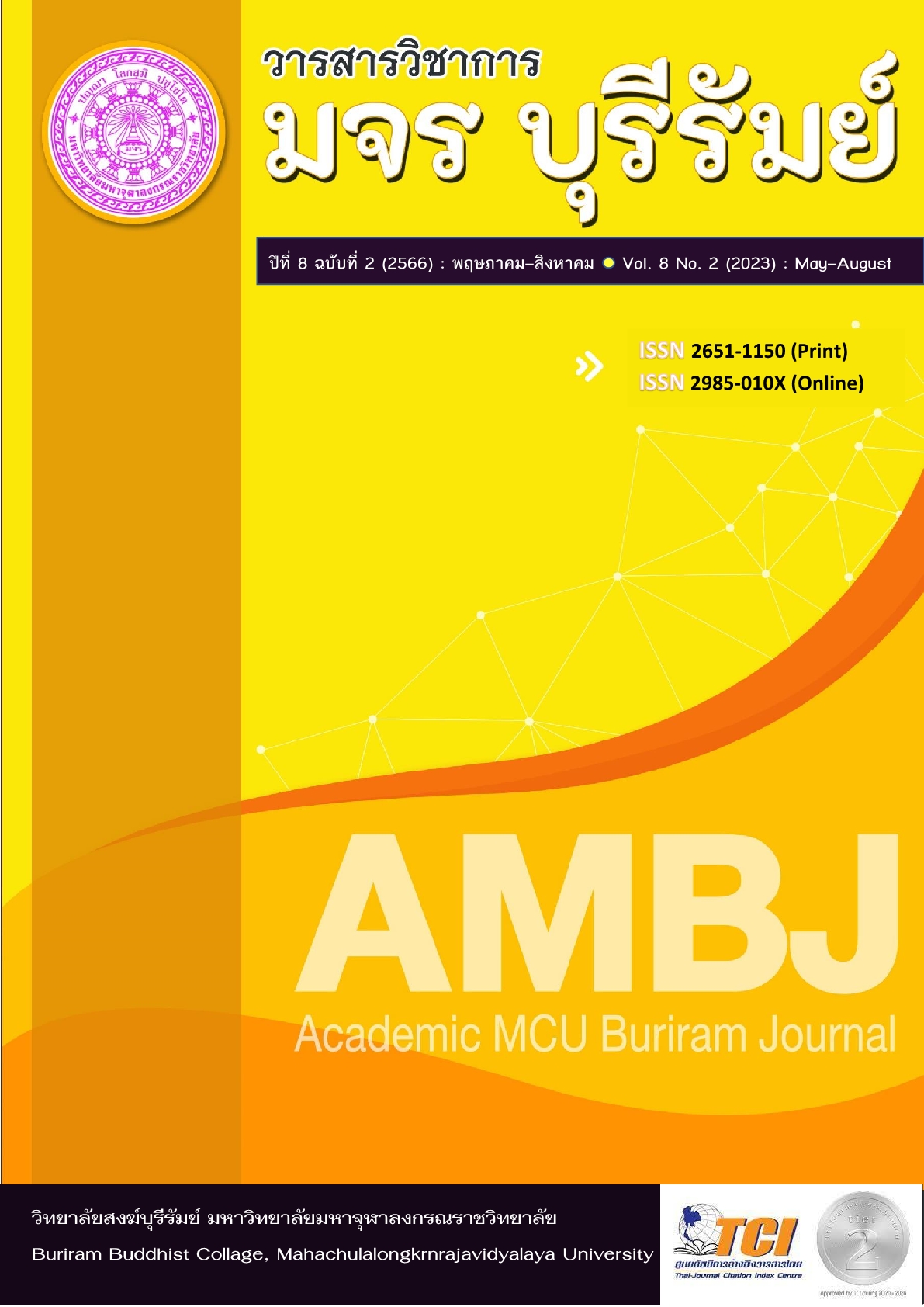An Analysis of Buddhist Knowledge that Appears in the Milindapanha Scripture
Keywords:
Buddhist Knowledge, Milindapanha ScriptureAbstract
The purpose of this research were: 1) to study the history, the structure and content of the Milindapanha scripture, 2) to study the Buddhist knowledge that appears in the Milindapanha scripture 3) to analyze the Buddhist knowledge that appears in the Milindapanha scripture. There is using of methods to analyze data by reasoning and reasoning. Then the research results presented by descriptive analysis method.
The research results found that:
1. Milindapanha is a scripture that explains some verses which the structure is divided into 6 parts: 1) karma in the past (Pubbakamma) and history of Phra Nagasen and King Milinda, 2) one-knot problem, 3) two-knot problem, 4) inferred knowledge, 5) characteristics of Dharma various things and 6) things to know with parables with the characteristics of asking-answering problems in the Milindapanha scripture as the aforementioned.
2. The Buddhist knowledge that appears in the Milindapanha scripture is a form of seeking theoretical knowledge according to Buddhist philosophy. There are 4 points: 1) wisdom to see things as they are; It is normal that component things exists both composed of conditioned and unformed component things, 3) wisdom knows what to do with assumptions and 4) problems in assumptions are problems that cause confusion and clinging (Upadana). Whereas, there are 4 levels of knowledge: 1) knowledge in level of consciousness, 2) knowledge in level of perception, 3) knowledge in level of views or mind-beings and 4) knowledge in level of super-knowledge.
3. After analyzing the Buddhist knowledge that appeared in the Milindapanha scripture reveals that relying on faith alone cannot reach the highest point “Nirvana”. It also requires knowledge that Buddhist philosophy calls wisdom “Panya”. Therefore, the basis of Buddhist knowledge is wisdom that has been trained and trained well, but the word “Panya” is a middle word because knowledge has many levels and there are many words used in specific meanings such as Yana, Vijja, Vipassana, Sampajanna, Parinya, Apinya, Patisambhidā, etc.
References
บุญมี แท่นแก้ว. (2543). ญาณวิทยา (ทฤษฎีความรู้). พิมพ์ครั้งที่ 3. กรุงเทพมหานคร: โอเดียนสโตร์.
พระธรรมปิฎก (ป.อ.ปยุตฺโต). (2543). รู้จักพระไตรปิฎกเพื่อเป็นชาวพุทธที่แท้. พิมพ์ครั้งที่ 2. กรุงเทพมหานคร: มูลนิธิพุทธธรรม.
พระมหามานพ กฺวิวํโส (นักการเรียน). (2535). การศึกษาเชิงวิเคราะห์เรื่องญาณวิทยา ในพุทธปรัชญา. วิทยานิพนธ์ศาสนศาสตรมหาบัณฑิต. ภาควิชาพุทธศาสนาและปรัชญา: สภาการศึกษามหามกุฏราชวิทยาลัย.
มหาวิทยาลัยมหามกุฏราชวิทยาลัย. (2543.) พระไตรปิฎกภาษาไทย ฉบับมหามกุฏราชวิทยาลัย พิมพ์เนื่องในวโรกาสครบ 200 ปี แห่งกรุงรัตนโกสินทร์ พุทธศักราช 2525. กรุงเทพมหานคร: มหาวิทยาลัยมหามกุฏราชวิทยาลัย.
ลักษณวัต ปาละรัตน์. (2554). พุทธญาณวิทยา. กรุงเทพมหานคร: หจก. เม็ดทรายพริ้นติ้ง.
วศิน อินทสระ. (2528). อธิบายมิลินทปัญหา. กรุงเทพมหานคร: มหามกุฏราชวิทยาลัย.
สมเด็จพระสังฆราช (อุฏฺฐายีมหาเถร). (2470). มิลินทปัญหา ฉบับโรงพิมพ์ไท. พระนิพนธ์คำนำ.
Downloads
Published
How to Cite
Issue
Section
License
Copyright (c) 2023 Academic MCU Buriram Journal

This work is licensed under a Creative Commons Attribution-NonCommercial-NoDerivatives 4.0 International License.
ทัศนะและความคิดเห็นที่ปรากฏในบทความวารสารฉบับนี้ถือเป็นความรับผิดชอบของผู้เขียนบทความนั้น ไม่ถือเป็นทัศนะและความรับผิดชอบของบรรณาธิการ





